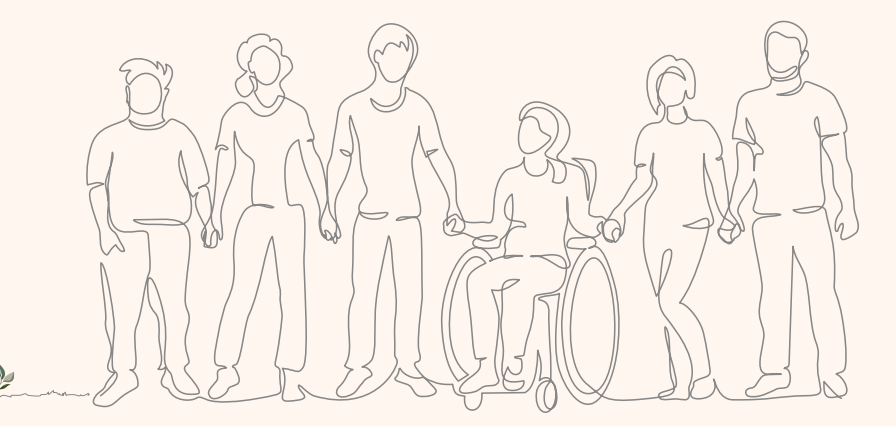Author: Nathalie Méndez, Monitoring and Evaluation Advisor
Regarding the emotion generated by the launch of the book “Art to Rebuild: An exploration of the multiple possible reconciliations“, the interest aroused by the publication and the project that gave rise to the book has been great. As mentioned in one of Ted Talk’s most viewed playlists, “Powerful art makes people talk,” the use of art as a creative and transformative engine of dialogue processes between communities on relevant issues such as racism, freedom and inequality is booming worldwide.
Artistic practices can move us deeply emotionally. However, the question is different when we try to tell someone what we saw, heard or felt when going to a museum, a gallery or even the same museographic experience of “Art to rebuild”. Undoubtedly, the place from which we tell the stories is different from that of other people. Similarly, the challenge of measuring the effects of diverse artistic strategies on the people who participated in them is no less, as is communicating their results to other actors. These actors are, for example, those to whom we must be accountable and even citizens who are unaware of the existence of these strategies, who of course, also have their own criteria and subjectivities.
The body as a stage for constant visible and invisible changes
One of the basic questions of the book is “how to measure the intangible and the subtle changes that are generated from artistic languages?”. When I thought of the word intangible, the first thing that came to my mind is that it is what is not seen. Clearly we tend to forget very quickly one of the most beautiful phrases of The Little Prince (even when this is one of our favorite books), “the essential is invisible to the eyes”. When rethinking the term, common sense makes us look in the dictionary, where the intangible is defined as something that cannot be touched.
Many times the internal change of a person can be touched and felt, and sometimes not, so, in addition to intangible, the process has the challenge that many of its results are immeasurable (understood as what is difficult to measure but not impossible). In this type of process, the body as a vehicle of social transformation is not only the starting point of healing, but the scenario where daily changes occur. Emotional, cognitive and physical changes were evident throughout the “Art to Rebuild” project.
“the process has the challenge that many of its results are immeasurable”
Thus, the process of measuring the immeasurable must have started from a point of view inverse to the common place of the social sciences, where initially some categories based on the literature are defined, then some indicators, measurement instruments, questions, formats, prints, photocopies and at some point, the process ends with a person answering the questions that the researcher has.
From my experience evaluating “Art to Rebuild”, the process is reversed at the right moment when some of the facilitators, with their experience in the matter, emphasize that “many of the people, due to their war wounds, cannot see or have amputations”. This is when the “logical” process of social research ceases to be “logical.” Although from the beginning instruments sensitive to the specific circumstances and conditions of the participants were designed, it was a challenge to transversalize an approach focused on the participants, since there are certain pre-existing logics from the social sciences that do not necessarily start from the individual as a center. Distancing ourselves from these logics and creating innovative measurement bets is one of the great contributions of this project. And that is when a path of creating instruments to measure results begins with a central emphasis on the person, his power and essence.
As a result, it was possible to innovate in the way of approaching the evaluation of artistic programs and strategies where the person is the starting point and final point. Through abstracting their reality and reading how the body of those who participate is telling us a story, it is that we can generate questions and methods of observation that nourish the report of formal indicators that dialogue with relevant categories for the project.
Sensitivity and diversity in measurement as a source of knowledge
After the review of different sources and national and international references, academic and non-academic, the alternative that proved to be effective for the project was to design diverse instruments using the methods and learnings of the behavioral sciences, where through surveys it is possible to measure conscious perceptions and cognitive dispositions of people. At the same time, ethnographic observation of the dynamics of the “Art to Rebuild” workshops was carried out, which allowed us to see the changes reflected in attitudes, behaviors and body postures themselves as an essential place for healing. You can see these changes at the end of chapter 2 of the book.
Ultimately, the transformations observed in empowerment, healing, and trust, some central categories for monitoring and evaluation, arose by capturing the gestures, postures, and verbal and nonverbal dispositions of the participants. This writing is then an invitation to discover and rediscover these varied measurement techniques as strategies with the ability to grasp complex issues such as healing and reconciliation. Thus, talking about different languages of measurement contributes to strengthening art as a vehicle of dialogue in our society and can lead us to obtain sensitive, contextualized and realistic evaluations of what we call the immeasurable.

No comment yet, add your voice below!